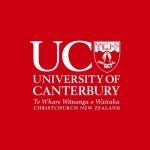University of Canterbury election study results shows media coverage of party policy sidelined by tea tape scandal
The results to 22 November of an ongoing University of Canterbury study into media coverage of the election show that coverage of policy is being sidelined by continuing media interest in the tea tape scandal involving Prime Minister John Key and the ACT Party’s candidate in the Epsom electorate, John Banks.
"Media references to policy issues (41% of coverage of issues) were outnumbered by references to non-policy issues (59% of coverage of issues),” said University of Canterbury researcher Katherine Roff. “This is in contrast to the first week of the election when the majority of the media coverage focused on policy issues.
“The economy was the leading policy issue throughout the first four weeks of the 2011 election campaign garnering 16.6% of all policy issue media coverage, followed by social and public services at 15% and state-owned assets at 12.2%. While coverage of policy issues was more frequent during the first week of the campaign the media’s attention increasingly turned to non-policy issues, particular since the tea tape scandal gained prominence during the last two weeks.”
Ms Roff and Dr Babak Bahador from the University of Canterbury’s School of Social and Political Sciences are continuing to collect data as part of their study of media coverage during the election – work that repeats a similar study undertaken by Dr Bahador during the 2008 general election in New Zealand.
Of the coverage devoted to parties at the four-week point of the campaign, National led Labour by attracting 37.6 % of coverage compared to Labour’s 28.4% of coverage. However, National had 25.4% more negative coverage than positive while Labour had 10.4% more negative coverage than positive coverage.
The Green Party received the largest net amount of positive coverage at 21.2%.
Prime Minister John Key attracted the majority of media coverage amongst party leaders at 52.6%, followed by Labour leader Phil Goff on 24.1%. However the Prime Minister received 28.9% more negative coverage than positive coverage whereas Mr Goff attracted 8.9% more negative coverage than positive coverage.
Study methodology:
The findings in this study are based on a content analysis of leading New Zealand daily newspapers (New Zealand Herald, Dominion Post and The Press) and daily television news programmes (TV1 and TV3 evening news). The findings in this report are based on results from a four-week study covering the period from Wednesday 26 October 2011 to (and including) Tuesday 22 November 2011.
(735) media stories were analysed. Stories were selected if they met the following criteria:
- Newspapers: From front page, election/politics section or editorial. At least 50 per cent of the content related to the election.
- Television: From first 10 news stories. At least 50 per cent of the content related to the election.
Within each story, references for the following five categories were identified and coded:
1: Parties (e.g. Labour, National), 2: Party Leaders (e.g. Key, Goff), 3: Policy issues (e.g. economy, tax), 4: Non-policy issues (e.g. polls, scandals), 5: Referendum (e.g. MMP). References to these categories formed the “unit of analysis” (UOA) for this study. In total, (28,575) UOA were identified based on the following distribution amongst the different categories:
|
Categories |
Units of Analysis |
Percentage of Total |
|
|
|
|
|
Parties |
8,335 |
29.2% |
|
Leaders |
6,110 |
21.4% |
|
Policy Issues |
5,439 |
19.0% |
|
Non-policy Issues |
7,815 |
27.3% |
|
Referendum |
876 |
3.1% |
|
|
|
|
|
Total (N =) |
28,575 |
100% |
Tone (positive, negative and neutral) was determined based on matching each reference to a media frame or frames. For example, references to a party leader as “desperate for power” or “flip-flopper” were coded as negative frames, while references to party leaders as “experienced” or having “bold ideas” would be coded as positive frames. In total, 117 different frames were identified in this study.
